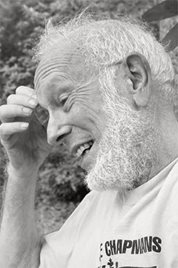In memoriam: Norman Meadow
Norman Meadow, a professor of biochemistry at Johns Hopkins University, died July 23, 2024, at the age of 87 in Maryland. He was a member of the American Society for Biochemistry and Molecular Biology for 34 years.

Born in May 1937, Meadow obtained his Ph.D. from the University of Pennsylvania before becoming a faculty member at Johns Hopkins University, where he served for three decades performing protein phosphorylation and bacterial signal transduction research.
Meadow's scientific contributions significantly advanced the field’s understanding of the bacterial phosphotransferase system, PTS. His work with Saul Roseman led to the isolation and characterization of the glucose-specific bacterial phosphocarrier protein IIIGlc and its role in sugar transport. He also contributed to understanding glucose transport kinetics within the PTS framework and pioneered a technique to characterize kinase–substrate interactions.
He is survived by his wife, Karen; three children, Max, Paul and David; and six grandchildren. He was predeceased by his parents, Mary and Paul, and brother, Harold.
Enjoy reading ASBMB Today?
Become a member to receive the print edition four times a year and the digital edition monthly.
Learn moreGet the latest from ASBMB Today
Enter your email address, and we’ll send you a weekly email with recent articles, interviews and more.
Latest in People
People highlights or most popular articles

In memoriam: Michael J. Chamberlin
He discovered RNA polymerase and was an ASBMB member for nearly 60 years.

Building the blueprint to block HIV
Wesley Sundquist will present his work on the HIV capsid and revolutionary drug, Lenacapavir, at the ASBMB Annual Meeting, March 7–10, in Maryland.

In memoriam: Alan G. Goodridge
He made pioneering discoveries on lipid metabolism and was an ASBMB member since 1971.

Alrubaye wins research and teaching awards
He was honored at the NACTA 2025 conference for the Educator Award and at the U of A State and National Awards reception for the Faculty Gold Medal.

Designing life’s building blocks with AI
Tanja Kortemme, a professor at the University of California, San Francisco, will discuss her research using computational biology to engineer proteins at the 2026 ASBMB Annual Meeting.

Jordahl named Gilliam Fellow
He will receive three years of funding to support his thesis research.

